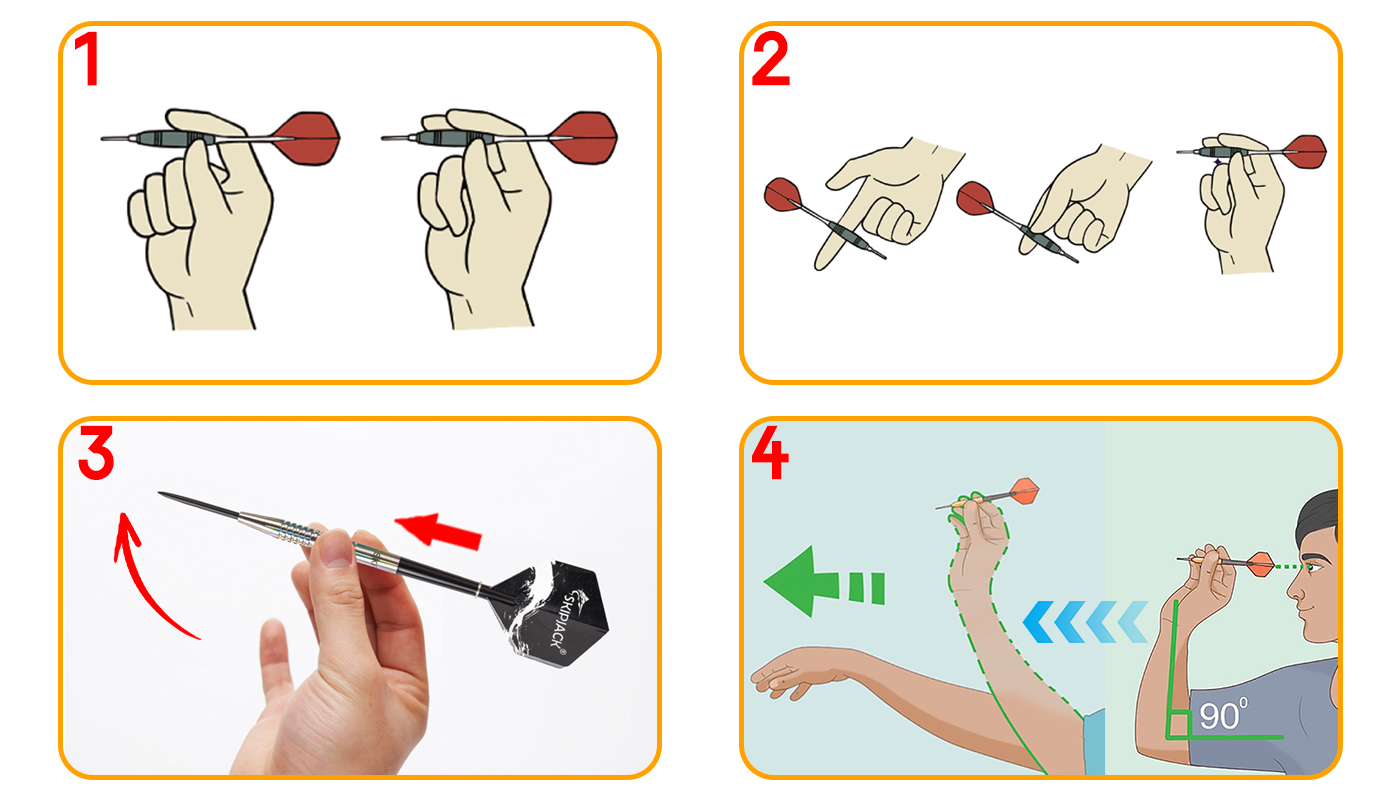What Is the Best Grip Style? : Complete Guide
- Understanding Grip Styles
- Different Types of Grip Styles
- The Pencil Grip
- The Claw Grip
- The Finger Grip
- The Palm Grip
- How to Choose the Best Grip Style for You
- Best Grip Styles for Specific Sports
- Best Grip for Darts
- Best Grip for Golf
- Best Grip for Tennis
- Common Mistakes When Choosing a Grip Style
- Tips to Improve Your Grip for Better Performance
- Conclusion
- FAQs
Understanding Grip Styles
Different Types of Grip Styles

The Pencil Grip
The Claw Grip
The Finger Grip
The Palm Grip
How to Choose the Best Grip Style for You
Best Grip Styles for Specific Sports

Best Grip for Darts
Best Grip for Golf
Best Grip for Tennis
Common Mistakes When Choosing a Grip Style
Tips to Improve Your Grip for Better Performance
Conclusion
FAQs

Dropshipping Custom Darts: Opportunities and Challenges for Online Sellers

How to Source Reliable Custom Dart Manufacturers for Global E-Commerce

Best-Selling Custom Dart Ideas for Amazon and Shopify Stores in 2025

Boost Your Promotional Campaigns with Branded Dartboards

Custom Darts as Premium Corporate Gifts: A Unique Way to Impress Clients
Darts
What if the dart product is damaged during transportation?
Replacement or compensation services are provided, and insurance transportation services are recommended.
How to ensure safety during the production process of dart products?
Through strict quality testing, including tip passivation treatment and material stability testing, it is ensured that there will be no accidental injuries during use.
Dart usage scenarios
Are dart products suitable for gymnasiums?
Yes, especially training dart boards, which are suitable for sports team training.
FAQ
What materials are your dartboards made from?
Our traditional dartboards are made from high-quality sisal fibers, known for their durability and self-healing properties, while our electronic dartboards are made from tough ABS and other durable materials.
Dart bags
Does the dart bag support layered storage design?
Yes, customizable partitions can be used to store dart shafts, dart blades and other accessories.

Factory wholesale custom 23g 90 tungsten steel tip darts
This tungsten dart is made of high-density tungsten steel, which has excellent stability and accuracy. Its optimized weight distribution and streamlined design make each throw more stable, suitable for professional players and high-frequency training, providing an excellent gaming experience.

Factory custom wholesale 22g brass dart set
This steel-tip iron darts set features durable iron barrels, sharp steel tips, and high-quality flights for smooth, accurate throws. Ideal for home, bars, or competitive games, it offers reliable performance and excellent value for players of all levels.

Custom wholesale 21g-28g steel tip brass dart set
The steel tip brass dart features a high-quality brass barrel, providing good weight balance and a comfortable grip. The steel tip design is suitable for traditional dartboards, offering high accuracy and durability. It is an ideal choice for both beginners and experienced players, combining affordability and functionality.

Wholesale 90% tungsten steel tip darts 21G PVD Color
This tungsten dart is made of high-density tungsten steel, which has excellent stability and accuracy. Its optimized weight distribution and streamlined design make each throw more stable, suitable for professional players and high-frequency training, providing an excellent gaming experience.
Discover SKIPJACK’s Custom Dart Solutions
SKIPJACK offers darts custom-made solutions designed for excellence. Improve your game with our precision-crafted, customized darts.

Whatsapp: +8615919340906
SKIPJACK DARTS
SKIPJACK DARTS
SKIPJACK DARTS